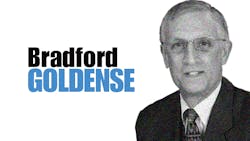Test-Suite Rebalancing Reduces Time To Market
This file type includes high resolution graphics and schematics when applicable.
Rebalancing a test suite is not easy. It requires much thought and patience, and it is not inexpensive. But lengthy time to market is also not inexpensive if the revenue streams of all products could be brought forward another one or two months. Because ROI justifications are unique to each company, rebalancing will be worth it for some firms and not others.
When was the last time your company systematically analyzed all the tests in the company's product testing suite? Of course, like inventory management, there will be A and B and C items, and obsolete inventory as well. But the question remains: When was the test suite last analyzed systematically?
The earlier bugs are discovered, the cheaper it is to fix them in both actual and elapsed time. Bugs occurring prior to beginning formal engineering change control are not the greatest concern as the entire cross-functional product team is generally not affected. However, the cost of bugs fixed under change control grows geometrically as time marches forward.
These change orders typically consume a couple of months or more out of each new product-development schedule. And they increase development costs. If unit sales volumes are high, development cost is not generally a concern, as it gets amortized over many units. If unit sales volumes are not large, development costs may be as important as time to market.
Finally, late changes and fixes often also increase product cost. Unless the sales price of the product can be bumped up to hold the planned unit gross margin constant, unit profit takes a hit. Historical test suites that have not been looked at in a while and/or company organizations rooted in physical testing may be reducing product ROI across all product lines.
There are many types of tests and testing: proof of design, proof of process, white box, black box, system, regression, life cycle, HALT, HASS, and a dozen others. But, with an open mind and competent staff, just about all categories of tests can be pulled forward to some degree. This is especially true in older companies.
Careful examination of line-item tests in company test suites will yield a number of findings. Some tests will proof design, but aren’t applied until well after the product is in the pilot or ramp-up phase. These tests are all candidates for being moved earlier to the prototype stage, or even earlier than that, by converting them to algorithms that run against solid models or EDA schematics and layouts.
Some tests are done in the field just before launch, or by agreement with an initial group of customers. Must all these tests still wait until this late stage? Or, has the product's evolution to electronics-based and software-driven hardware now created the opportunity to conduct some of these tests earlier in development?
The test suite of a company is a major asset worth millions. It evolved as the company evolved. For older companies, most of the test-suite asset was put in place during the mechanical and electromechanical eras. Somewhat understandably, the organizations chartered with building and maintaining the test suite did not foresee how quickly software would overlay the product line. As such, even more recently developed line-item tests were placed where they had been historically. Historical placement may still be occurring today.
This file type includes high resolution graphics and schematics when applicable.
Moving the test suite forward is a three- or four-year project, analogous in company time and investment to transforming an organization to a six-sigma or lean culture. There are typically thousands of line-item tests that have to be examined for their potential to be done earlier. Moving the cheese will create a great deal of discussion. On the bright side, in addition to reducing time to market, the effort also generally improves test coverage. Test coverage is the number and types of errors the test suite can discover.
Is your company's test suite rooted in the 20th century or in the 21st century? If you believe it is the former, move the cheese and rebalance the test suite to reduce time to market, development cost, and product cost. You may also realize an increase in test coverage.
About the Author
Bradford Goldense
Contributing Technical Expert
Bradford L. Goldense is founder and president of Goldense Group, Inc. [GGI] (www.goldensegroupinc.com), a consulting, market research, and education firm focused on business and technology management strategies and practices for product creation, development, and commercialization. He has been an adjunct faculty member of the graduate engineering school at Tufts University's Gordon Institute for 19 years. Goldense is a Certified New Product Development Professional [NPDP], a Certified Manufacturing Engineer [CMfgE], a Certified Computer Professional [CCP], and is Certified In Production & Inventory Management [CPIM]. He holds over 200 registered copyrights and is a recognized subject-matter expert, including appearances on PBS and CNBC. He has consulted to over 250 companies and over 750 manufacturing locations on four continents since founding GGI in 1986. Goldense holds an MBA in Accounting from the Cornell Johnson School and a BSCE from Brown University. For more information, please see Brad's LinkedIn profile or visit GGI's home page.


